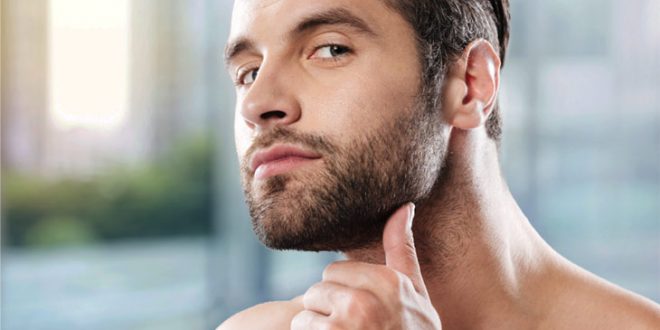A beard transplant is a transformative procedure that not only enhances facial aesthetics but also restores confidence. However, the post-operative phase is just as critical as the surgery itself. Patients must follow a structured and gentle grooming routine to ensure optimal healing and to preserve the results of the procedure. If you’ve recently undergone a Beard hair transplant in Islamabad, understanding when and how to resume shaving and grooming is essential.
This guide provides detailed week-by-week advice, product suggestions, and techniques to help you care for your new beard without risking damage or infection. The aim is to support you in achieving a healthy, natural, and permanent beard appearance.
Understanding the Importance of Post-Op Beard Grooming
After a beard transplant, the skin in both the donor and recipient areas is extremely sensitive. Follicular units are delicately implanted, and they require time to establish a blood supply and settle in. Shaving too early or using the wrong techniques can result in:
- Trauma to the grafts
- Poor hair growth or graft failure
- Infection or folliculitis
- Scarring or skin irritation
Proper grooming, including the timing of your first shave and the type of products used, significantly affects the final outcome of the transplant.
Week-by-Week Grooming Timeline
Week 1: No Grooming or Touching
- What to Do: Keep the area clean and untouched. Use the prescribed saline spray and mild shampoo for cleaning.
- What to Avoid: Absolutely no shaving or trimming. Avoid rubbing, scratching, or applying any skincare or hair products.
- Reason: The grafts are in the most fragile stage. Shaving can dislodge them, causing transplant failure.
Week 2: Gentle Washing
- What to Do: You may start gently patting the area dry after washing. Crusts and scabs may begin falling off naturally.
- What to Avoid: Do not pluck, exfoliate, or use razors or trimmers yet.
- Note: At this stage, some grafts may start shedding. This is normal and part of the “shock loss” phase.
Week 3: Observation Phase
- What to Do: Most scabs should be gone. The skin may still be pink or sensitive.
- Grooming Tip: You can begin applying soothing moisturizers (as approved by your surgeon) to reduce dryness.
- Shaving Status: Still no shaving or grooming tools should touch the area.
When Can You Start Shaving After a Beard Transplant?
Typically, patients can start shaving 4 to 6 weeks post-surgery. However, this varies depending on individual healing and doctor recommendations.
Week 4–6: First Trim
- Tool: Use an electric trimmer without directly touching the skin. Use a guard if needed.
- Technique: Trim only the ends of the transplanted hair to tidy the appearance.
- Caution: Avoid blades, wet razors, or aggressive pressure.
After Week 6: Shaving with Caution
- Tool Options:
- Electric razors (safest for skin)
- Manual razors (only if the surgeon approves)
- Preparation:
- Wet the face with warm water
- Apply a gentle, alcohol-free shaving foam
- Technique:
- Shave in the direction of hair growth
- Use short, light strokes
- Rinse frequently to avoid tugging
- Aftercare:
- Pat the face dry
- Apply a mild, non-comedogenic moisturizer or aftershave balm
Long-Term Grooming and Maintenance Tips
Once the beard has fully grown (typically 6–12 months after surgery), you can resume a normal grooming routine. To maintain the health and aesthetics of your beard:
1. Use Beard Oils
Choose non-comedogenic and fragrance-free oils to keep hair soft and moisturized.
2. Comb Regularly
Helps prevent ingrown hairs and keeps the beard neat.
3. Wash Gently
Use sulfate-free shampoos or dedicated beard washes to avoid stripping natural oils.
4. Trim Strategically
Use scissors or electric trimmers rather than blades until your skin fully adjusts.
5. Avoid Harsh Chemicals
Refrain from using dyes, harsh cleansers, or chemical peels on the face until 6 months post-surgery.
Common Mistakes to Avoid After a Beard Transplant
Avoiding common pitfalls ensures long-lasting results and prevents complications:
- Shaving too soon can remove newly implanted grafts.
- Using alcohol-based aftershaves can irritate sensitive skin.
- Applying pressure while shaving can damage grafts and cause bleeding.
- Neglecting hygiene may lead to folliculitis or infections.
Signs of Shaving-Related Issues
While mild irritation can be expected after the first few shaves, be on the lookout for:
- Redness lasting beyond 48 hours
- Pus or swelling
- Pain or sensitivity in the grafted area
- Ingrown hairs or razor bumps
If any of these symptoms occur, it’s best to contact your surgeon for guidance before resuming grooming.
When to Visit Your Surgeon for Grooming Advice
Professional guidance is essential if:
- You’re unsure when to shave
- There’s unusual irritation or hair shedding
- You plan to apply cosmetic or beard-enhancing products
- You wish to shape or contour your new beard professionally
Choosing a reputable center like Dynamic Aesthetic Clinic Islamabad can ensure that your post-transplant care is just as successful as the procedure itself.
Conclusion
Shaving and grooming after a beard transplant is a gradual process that requires patience and care. The urge to style your beard immediately is understandable, but caution in the early weeks is key to long-term success. By following expert advice and using gentle techniques, you can maintain the health of your transplanted hair and enjoy a natural, full beard.








